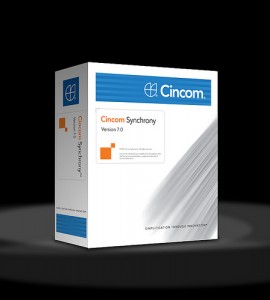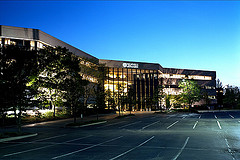Hamburgers and Software: What Could They Possibly Have in Common?

Software and Hamburgers don’t seem to have much in common, but when you look at the history of fast food chains McDonald’s and Wendy’s it becomes easier to see parallels between the two and Cincom.
McDonald’s
In the early 1950’s Ray Kroc bought a then very small California-based company that sold hamburgers at drive-in restaurants where customers could either eat in or take out their hamburgers. The entrepreneurial minded Kroc believed that the significant growth of automobiles and a rapid change in consumer lifestyles in the decade was an opportunity to promote and franchise limited menu restaurants which provided quick but simple fare.
To capitalize on his ideas, he began to offer the standard hamburger with French fries and a beverage at his franchised restaurants with the “golden arches,” which were a stylized “M” for McDonald’s. This standard fare, along with customer demands of consistency of quality, convenience and ease of consumption, cleanliness, good value, excellent marketing and competent, courteous and quick service all proved to be key factors in a great success.
In fact, Kroc’s idea, approach and execution was so well received that many imitators, like Burger Chef, Burger King and Big Boy hamburgers opened and thrived in the market.
As these imitators gained popularity, Kroc fought to further distinguish McDonald’s, so, he introduced the sesame seed bun around 1970. McDonald’s had differentiated itself without radically changing its successful corporate culture or offerings.
By the early 1980’s, when very heavy saturation of existing markets for hamburgers was being realized, McDonald’s innovative spirit moved to the idea of Egg McMuffins to expand same store revenues. But, in order to not lose afternoon and evening hamburger sales to breakfast-type choices, McDonald’s stopped serving the Egg McMuffin at 10:30 a.m.
Then, as more children began watching television in the early 1980’s, McDonald’s began to market directly to them. These appeals took the form of the Happy Meal and toy, Ronald McDonald and playgrounds attached to or near the restaurant.
In short, the tiny 1½ oz. hamburger patty demanded lots of superb marketing to generate preference and brand development. Since the patty was so small, McDonald’s really did not provide a very good comparative value for the money; so good marketing was used to stimulate and sustain demand and preference.
A new competitor – Wendy’s
Meanwhile, in 1969, Dave Thomas created another hamburger oriented fast-food restaurant which was to also become very successful using a very similar philosophy in Dublin, Ohio, a suburb of Columbus – Wendy’s.
To compete with McDonald’s, Thomas – a very late entrant into the fast food market – had to create an idea of difference or uniqueness through a better value and additional choices. To do so, Thomas offered a 4 oz. hamburger patty as compared to the 1½ oz. McDonald’s standard burger – more than 2½ times as much hamburger. Wendy’s also offered 11 different choices of toppings and sides whereas McDonald’s provided a very limited and standard hamburger. Wendy’s also customized each hamburger as requested, with all additions being fresh daily.
To further differentiate from McDonald’s and the other hamburger fast food franchises, Wendy’s designed its much larger hamburger patty into squares. This way, more hamburgers could be grilled at a time on the stoves, while each patty protruded off each corner of the round bun, which made the hamburger appear to overflow with beef.
It all came together beautifully and the up-start Wendy’s grew rapidly against much larger and already very well entrenched competitors.
Dave Thomas realized that once a franchise such as McDonald’s had become successful, it would be loath to change its offering in order to thwart competition. After all, why should McDonald’s provide more than 2½ times as much hamburger, when it could sell almost all the 1½ oz. burgers it could prepare every day? Moreover, McDonald’s was most surely not going to cut its price.
All of this resistance to change by the dominant market leader not only provided a very profitable price umbrella for other competitors but the normal resistance to change forces, worked to Wendy’s advantage. Just as challenging attackers have various advantages over almost all well-entrenched dominant providers in virtually every marketplace the history of commerce proves to us that once dominant firms can be successfully attacked when they are unwilling to change from the formulas, methods, processes and nature of the offerings which once helped to produce their dominance.
Where’s the Beef?
As the fast-food hamburger competition became even more intense, Wendy’s attacked this unwillingness to change, and played its better value trump card for the entire world to see.
In 1982, an advertisement featured three older ladies, who took the lid off of a very big hamburger bun, to disclose a very small hamburger with a pickle slice almost completely covering the patty. Seeing this, one of the ladies gruffly complained, in a pointed question, “Where’s the beef?”
With this simple but very direct marketing statement, the Wendy’s franchise skyrocketed. “Where’s the beef?” became a part of the English vernacular and Wendy’s came to be seen as the high value choice and McDonald’s has never really been able to overcome the low-value image that Wendy’s so cleverly repositioned that dominant market leader into. Without even mentioning the name McDonald’s, everyone instantly knew which company sold such tiny hamburger patties in such big buns.
So, Why Hamburgers?
The same ideas of competition and change apply in almost every market, including software. Speaking to a large audience early in its life cycle, the entrepreneurial Ray Kroc boldly stated that to succeed in any enterprise “You’ve got to be daring! You’ve got to be first! You’ve got to be different!” This is a very concise and precise summation of a Unique Value Proposition (UVP). Then later, at a similar conference, Kroc strongly stated that for McDonald’s to continue to grow and to assert leadership, “We’ve got to have a noticeable difference that gives us an intangible quality that distinguishes us from all the others.”
Ray Kroc practiced what he preached, but so did Dave Thomas. Wendy’s President had originally operated several Kentucky Fried Chicken (KFC) franchises which he had bought for $500, but later sold for millions and used the profits to found Wendy’s. He learned how to build a UVP from both McDonald’s and KFC and understood that the UVP must be supported by a significant and substantial Value Distribution System if it is to succeed. Having a strong UVP, but a weak Value Distribution System hobbles, if not cripples results generation.
Fast food entrepreneurs, by need and nature of their business, must always have their hyper-competitive finger on the pulse of marketing intelligence and target market knowledge. Their marketing “sixth sense” and resulting new positioning is aligned with the operational and process components of the business to enable these chains to take a new, small or big stride almost overnight. Even when they make a small change to their menu, they market it as both big and responsive to “WHAT and HOW people want NOW.”
Execution is Essential

All of this is 100% applicable to the software industry – and to Cincom! Challengers such as Cincom can reposition dominant market leaders such as Oracle and SAP, just as Wendy’s successfully positioned itself by re-positioning McDonald’s. But, we must understand what we are trying to do. We must have a UVP which is compelling, and we must do those things well, if we are to be successful.
The Achilles Heel of most dominant providers is that, with success, they inevitably move from an emphasis on trying to sell what the customer wants to buy, which was the focus that gained their original success, to an emphasis of using their marketing might and muscle to try to sell the customer what they want to offer. This is a huge shift of emphasis that has immense implications. This transformation of focus and intent prevails almost always and everywhere, and in every industry. So, I will return to this issue many times in the future and use different examples to prove and emphasize this point.
From our earliest days, Cincom stated that our reason for being is to “Create and Serve the Customer.” This statement means that we must seek to provide what the customer wants to buy, rather than focus upon what we want to sell. Very large, dominant firms seldom do this because this usually means maximizing value for the customer rather than maximizing profit for the provider. That’s why we, and others, who are not dominant will always have opportunities provided and welcomes offered when we provide what this customer wants to buy. What does the customer want? Why do they want such things? And, how can we best satisfy these wants (and needs too)? These are maybe the three most important questions that any firm can ask of itself, so, they must always be prominent in the corporate mind and each individual must ask the question, how can I best personally aid in these corporate pursuits to well satisfy customers worries and needs in ways that deliver the greatest value, with the lowest overall costs and risks?
 Follow
Follow